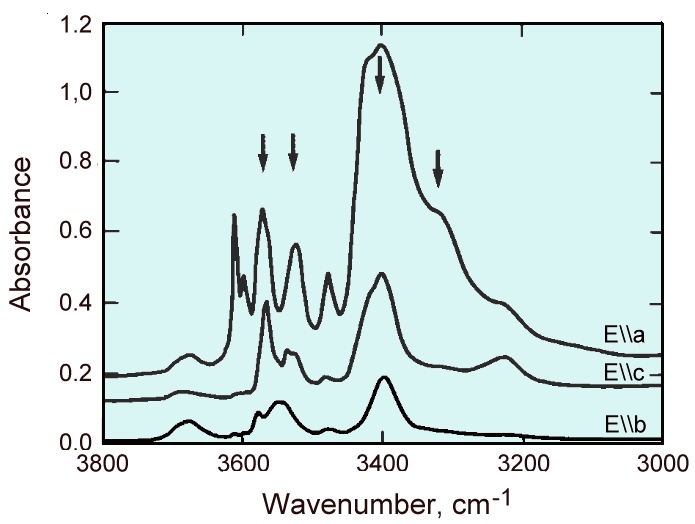Planar OH-bearing defects in mantle olivine
Masao Kitamura, Shinji Kondoh, Nobuo Morimoto
Department of Geology and Mineralogy
Kyoto University, Kyoto 606, Japan
Gregory H. Miller, George R. Rossman
Division of Geological and Planetary Sciences
California Institute of Technology, Pasadena, CA 91125, USA
Andrew Putnis
Department of Earth Sciences
University of Cambridge, Cambridge, CB2 3EQ, UK
Abstract
Olivine, (Mg,Fe)2SiO2, is the predominant mineral
in the upper mantle and a study of its defect structure is fundamental
to an understanding of the rheological laws that describe mantle flow.
Existing models are based on creep mechanisms in which point and line
defects have a major role. Her we report the first observations, by
transmission electron microscopy (TEM), of planar defects in olivine.
The displacement vector associated with the defects, R =
1/4<001>, together with infrared absorption spectra suggest that
the structure of the defects resembles that of an OH-bearing monolayer
within the olivine, as exists in the humite family of minerals. Because
the planar defects were formed in the upper mantle, their discovery has
important implications for the deformation of olivine at high pressures
and temperatures in the presence of trace quantities of water, as well
as revealing another possible reservoir of water in the upper mantle.

Low-magnification electron micrograph of planer defects oriented on {001}in olivine from Buell Park, Arizona.

Polarized infrared spectrum of olivine from Buell Park, Arizona, with titanian clinohumite within the crystal.
The clinohumite absorption features are indicated by the arrows.

